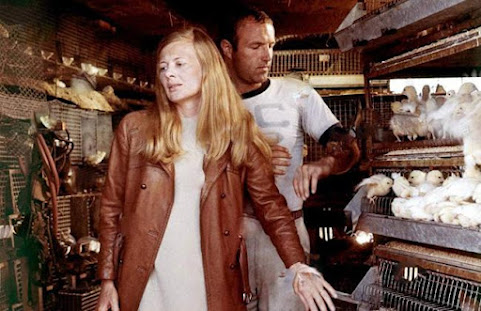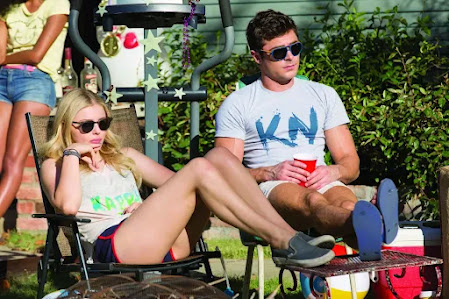 |
| Ellijah Wood |
An odd and disarming sleeper, Ant Timpson's Come to Daddy is a gory and well modulated horror film. Ellijah Wood plays Norval, a suicidal nebbish, who is summoned by his long lost father to a remote coastal address. Norval is soon in distress and must test his resourcefulness in order to survive. Spam, again, in a cabin, but also a thoughtful meditation on masculinity and its discontents. The cast is expert, particularly Stephen McHattie, Madeleine Simi, Martin Donovan, and Michael Smiley. That Rex Reed did not like it should be reason enough for for horror aficionados to check it out. Currently streaming on Tubi.Juliana Rojas and Marco Dutra's Good Manners, from 2017, is a Brazilian werewolf film with unusual subtlety and compassion. The film successfully folds a host of hot button issues, such as racism, sexuality, class issues, vegetarianism, and religion, into the narrative deftly. The high rises, shopping malls, and barrios of Sao Paulo are filmed with just enough expressionistic flavor to make them a fitting setting for this otherworldly fable. The filmmakers linking the onset of puberty and adolescent rebellion with their young werewolf's tale displays a keen understanding of the roots of lycanthropy. Another sleeper currently streaming on Tubi.
James Gunn's Guardians of the Galaxy 3 is a very minor triumph of production design and spritely direction. The look of the film hews more closely to kooky Barbarella than solemn Star Wars and all for the better. The last quarter drags because Gunn tries to combine action with pantheistic uplift, but most of the film is cheeky fun from the screenwriter of Tromeo and Juliet. Not as good as 1, but much better than 2.
Bernard Girard's Dead Heat on a Merry-Go-Round, from 1966, is a workmanlike heist film starring James Coburn. Dated and overly cutesy, the film tries to coast on Coburn's charm, but is nether tough enough to work as a crime film or funny enough to work as a comedy. I did like the film's use of LAX as the site of the crime and the film's costumery. In fact, I can't get Camilla Sparv's pink and grey houndstooth maxi skirt out of my mind, though I wish I could get her performance out of there. Featuring Aldo Rey, Robert Webber, and Severn Darden with cameos by Rose Marie and Harrison Ford.
Paul Haggis' The Three Next Days, from 2010, left little imprint on the culture and now I know why. A stupefyingly extended riff on a French film entitled Pour Elle, The Three Next Days tells of a teacher (Russell Crowe) who must spring his wife (Elizabeth Banks) from prison where she is serving a life sentence after being unjustly convicted of murder. Plausibility is never an issue in a film in which Crowe and Banks are never believable as a couple. A talented cast (Brian Dennehy, Olivia Wilde, Daniel Stern, Liam Neeson, RZA) is squandered in a project both incoherent and grandiose. The make-up, music, and cinematography are all subpar for a major studio film in this disaster.
My wife and I both burst out laughing at the bald badness of Ruby Baby's ending. Would that the rest of the movie had been as inadvertently entertainimg.

.jpg)


























